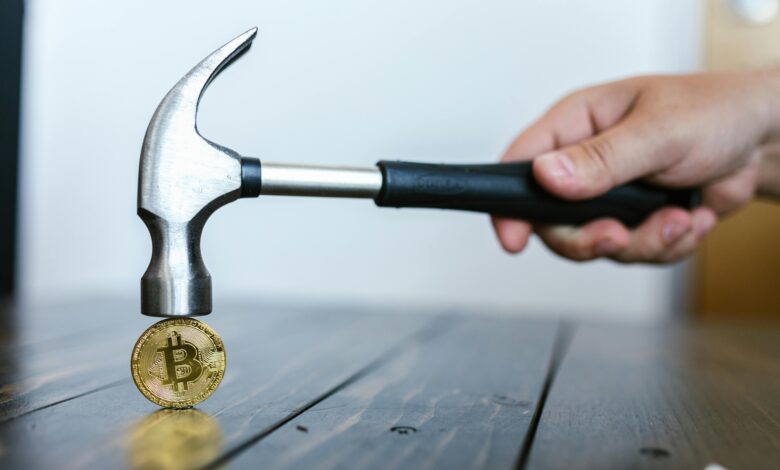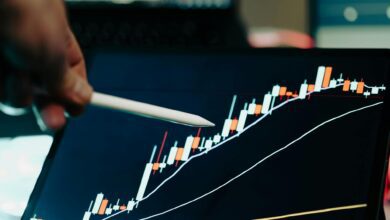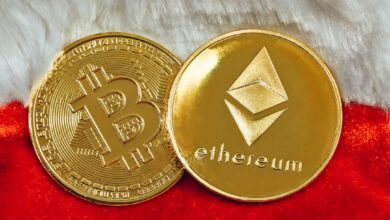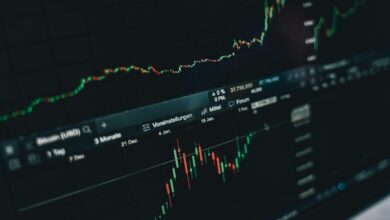Gold Under Pressure: The Impact of Geopolitical Tensions on Demand and Market Prices

In an increasingly interconnected world, geopolitical tensions have emerged as a powerful force shaping financial markets, and none more so than the gold market. As conflicts arise and uncertainties loom, investors often turn to gold, viewing it as a safe haven amidst chaos. This precious metal has historically been a barometer of economic stability, attracting capital during times of crisis and driving prices to new heights. In this article, we delve into the intricate relationship between geopolitical unrest and gold demand, shedding light on how investor behavior shifts in turbulent times. We will explore the ripple effect that global conflicts have on market dynamics, examining how these events can create waves that influence gold prices far beyond their immediate geographical boundaries. Lastly, we will analyze current trends and forecast future price movements in the context of rising geopolitical uncertainties. Join us as we unpack the complex interplay between geopolitics and gold, providing insights that are essential for investors navigating this ever-evolving landscape.
- 1. "Gold as a Safe Haven: Understanding Investor Behavior During Geopolitical Crises"
- 2. "The Ripple Effect: How Global Conflicts Shape Gold Market Dynamics"
- 3. "Forecasting Gold Prices: Analyzing Trends Amidst Rising Geopolitical Uncertainties"
1. "Gold as a Safe Haven: Understanding Investor Behavior During Geopolitical Crises"
During periods of geopolitical uncertainty, investors often gravitate towards gold, viewing it as a safe haven asset. This behavior is deeply rooted in the historical perception of gold as a store of value and a hedge against economic instability. Unlike fiat currencies, which can be subject to inflation and government policies, gold has maintained intrinsic value over centuries, making it an attractive option for those seeking to preserve their wealth during turbulent times.
When geopolitical tensions rise—whether due to military conflicts, trade wars, or diplomatic disputes—market volatility typically increases. In such environments, investors often become risk-averse, leading to a flight to safety. Gold’s unique properties, including its limited supply and universal acceptance, contribute to its allure. As stock markets falter and currencies fluctuate, the demand for gold often spikes as investors look to shield their portfolios from potential losses.
Furthermore, gold’s performance during crises can be influenced by the behavior of institutional investors and central banks. During times of uncertainty, these entities may increase their gold holdings as a strategic move to diversify their assets and mitigate risk. This heightened demand can drive prices higher, reinforcing the perception of gold as a reliable safeguard against geopolitical fallout.
Additionally, investor psychology plays a crucial role in shaping gold demand. The fear of economic collapse or regional instability can lead to panic buying, further pushing prices up. This creates a self-fulfilling cycle where rising gold prices attract more investors, leading to even greater demand during crises. Consequently, understanding the relationship between geopolitical tensions and investor behavior is vital for anticipating fluctuations in gold prices and demand, making it a crucial consideration for both individual and institutional investors alike.
2. "The Ripple Effect: How Global Conflicts Shape Gold Market Dynamics"
Global conflicts and geopolitical tensions create a complex web of influence that reverberates throughout the gold market. As uncertainty escalates, investors often turn to gold as a safe haven, seeking to protect their wealth from the volatility associated with unstable political environments. This trend is particularly pronounced during periods of heightened conflict, where fear and speculation drive demand for gold, pushing prices upward.
When a conflict arises, whether it be a military confrontation, economic sanctions, or political unrest, the immediate reaction in financial markets tends to be one of caution. Investors typically liquidate riskier assets, redirecting their capital towards gold, which is perceived as a stable store of value. This shift in investment behavior can lead to a rapid increase in gold prices, as evidenced during major geopolitical events such as the Gulf War, the 2008 financial crisis, and more recently, the ongoing tensions between Russia and Ukraine. Each of these instances saw significant spikes in gold prices as investors sought refuge from the turmoil in traditional equity markets.
Moreover, the ripple effect extends beyond immediate price movements. Prolonged conflicts can alter supply chains and mining operations, impacting gold production levels. For instance, regions embroiled in conflict may see reduced mining output due to safety concerns, leading to tighter supply in the global market. This scarcity, combined with rising demand, can further exacerbate price increases, creating a feedback loop where geopolitical tensions and gold prices influence each other.
Currency fluctuations also play a crucial role in this dynamic. During times of geopolitical instability, the value of national currencies may decline, prompting investors to seek gold as a hedge against currency devaluation. This behavior not only drives demand but can also lead to a shift in the international gold market, as countries with weaker currencies may increase their gold reserves to bolster economic stability.
In summary, the interplay between global conflicts and the gold market is characterized by a series of interconnected responses. As geopolitical tensions rise, the demand for gold typically surges, influencing prices and market dynamics in profound ways. Investors, policymakers, and analysts closely monitor these developments, understanding that the implications of conflict extend far beyond immediate political landscapes, shaping the very fabric of financial markets worldwide.
3. "Forecasting Gold Prices: Analyzing Trends Amidst Rising Geopolitical Uncertainties"
In recent years, the interplay between geopolitical tensions and gold prices has become increasingly evident, making it essential to analyze current trends in the context of rising uncertainties. As traditional safe-haven assets, gold and precious metals often see fluctuations in demand driven by global events, such as conflicts, trade disputes, and political instability.
Forecasting gold prices amidst these rising tensions involves examining both historical data and current geopolitical landscapes. For instance, periods of heightened conflict or uncertainty—such as military engagements, sanctions, or significant diplomatic breakdowns—tend to correlate with spikes in gold prices. Investors often flock to gold to hedge against potential economic downturns or currency devaluation, driving up its demand and price.
Recent trends suggest that as geopolitical tensions escalate, particularly in regions like Eastern Europe, the Middle East, and Asia, we can expect gold prices to respond accordingly. The ongoing conflict in Ukraine, for example, has not only impacted global energy markets but also heightened fears of economic recession, prompting increased investment in gold. Similarly, tensions surrounding Taiwan and the South China Sea have created an atmosphere of uncertainty that encourages investors to seek the stability that gold offers.
Moreover, central banks' policies in response to geopolitical events can significantly influence gold prices. As countries navigate sanctions or trade barriers, their monetary policies may shift, impacting inflation rates and interest rates. A lower interest rate environment often leads to higher gold prices, as the opportunity cost of holding non-yielding assets diminishes.
To effectively forecast gold prices, analysts must consider a combination of geopolitical developments, economic indicators, and market sentiment. Tools such as technical analysis, historical price patterns, and geopolitical risk assessments can provide valuable insights. However, the unpredictable nature of global events means that forecasts will always carry an element of uncertainty.
In summary, while forecasting gold prices amid rising geopolitical uncertainties is complex, understanding the historical context and current trends can offer a clearer picture of potential future movements. As tensions continue to shape the global landscape, gold remains a pivotal asset for investors looking to navigate uncertainty and protect their wealth.
In conclusion, the interplay between geopolitical tensions and gold demand underscores the metal's enduring role as a safe haven for investors in times of uncertainty. As explored in the article, heightened geopolitical crises trigger a flight to safety, causing a surge in gold purchases and subsequently driving prices upward. The ripple effects of global conflicts not only disrupt traditional market dynamics but also reshape investor behavior, as individuals and institutions alike seek to hedge against volatility and economic instability.
Moreover, as we look to the future, the forecasting of gold prices amid rising geopolitical uncertainties reveals a complex landscape where political developments, economic policies, and global relations will continue to influence market sentiment. As history has shown, gold remains a resilient asset, often thriving in the face of turmoil. Investors and analysts must remain vigilant, understanding that geopolitical tensions will likely continue to play a significant role in shaping gold market trends. Ultimately, the relationship between geopolitics and gold is a reminder of the metal's intrinsic value and its ability to act as a safeguard in an unpredictable world.





